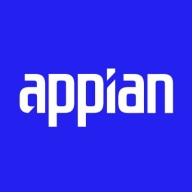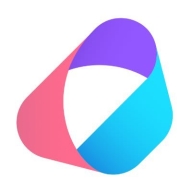

Appian and Orkes are in the process automation category. Orkes has the advantage in feature richness, while Appian stands out in pricing and support.
Features: Appian offers robust workflow automation, low-code development capabilities, and rapid application delivery. Orkes is known for advanced orchestration, seamless cloud integrations, and extensive capabilities ideal for complex deployments.
Ease of Deployment and Customer Service: Appian provides a streamlined deployment process and comprehensive support, simplifying implementation. Orkes requires a steeper learning curve but is supported by extensive integration resources.
Pricing and ROI: Appian presents competitive setup costs and a strong return on investment with its efficient deployment and support structure. Orkes, despite higher initial costs for its complex features, offers long-term ROI through extensive capabilities and integration potential.
| Product | Market Share (%) |
|---|---|
| Appian | 5.4% |
| Orkes | 1.8% |
| Other | 92.8% |

| Company Size | Count |
|---|---|
| Small Business | 20 |
| Midsize Enterprise | 9 |
| Large Enterprise | 41 |
Appian is a unified low-code platform and solution used by businesses to build enterprise applications and workflows. This product adapts to the needs of clients and the technologies they are already using to combine their data in a single workflow and maximize resources. The platform has four main components through which it transforms the work process for companies of various sizes. They are:
Appian is utilized across a diverse set of industries, including automotive and manufacturing, energy and utilities, education, financial services, telecom and media, transportation, retail, insurance, healthcare, and life sciences. The most frequent use cases of Appian are customer journey, governance, risk and compliance, operational efficiency, supply chain, distributed order management, and environmental, social, and governance (ESG) management.
Appian Features
Appian has various features that allow users to create solutions for their businesses. These features can be separated into a few groups according to function, including automation, low-code application development, and integrations and data. Some of the most frequently used features of Appian include:
Appian Benefits
The benefits of using Appian include:
Reviews from Real Users
A practice leader - digital process automation at a computer software company values Appian highly because the product is easy to develop, low-code, and has a good user interface.
Alan G., an advisory board member at Codecon VR, Appian offers a clear application life cycle, easy to learn documentation, and comes with a fundamentals course.
Orkes provides a robust platform designed to facilitate orchestration of microservices, enhancing operational efficiency. With its sophisticated mechanism, it caters to diverse workflows, ensuring seamless integration and streamlined processes for tech-savvy users.
Orkes stands out for its ability to efficiently manage microservice orchestration, offering a scalable and reliable solution for complex workflows. By focusing on operational excellence, Orkes simplifies process management and enhances productivity. Its architecture supports a wide range of applications, providing versatility and adaptability for advanced implementations. Well-suited for developers, Orkes emphasizes ease of integration and deployment, ensuring that the tool aligns with operational requirements.
What are the most important features of Orkes?Orkes is implemented effectively across industries like e-commerce and finance, where real-time processing and robust system integration are critical. Its application is best seen in environments that require seamless coordination of disparate microservices to maintain fluid operations and provide exceptional service delivery.
We monitor all Process Automation reviews to prevent fraudulent reviews and keep review quality high. We do not post reviews by company employees or direct competitors. We validate each review for authenticity via cross-reference with LinkedIn, and personal follow-up with the reviewer when necessary.